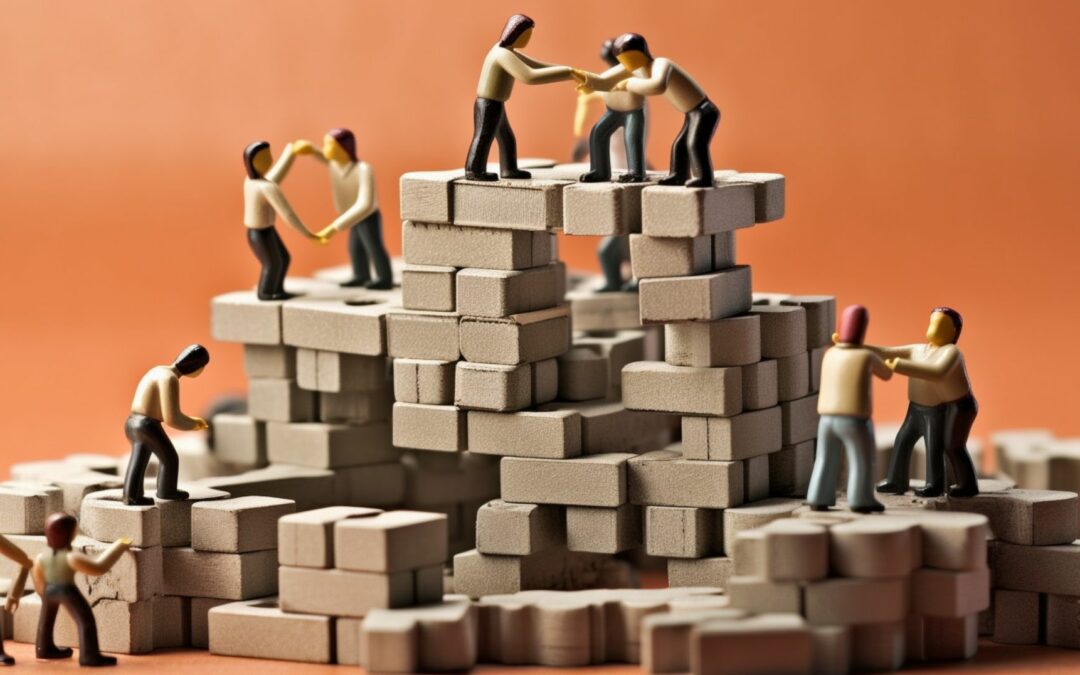Sure paychecks matter. So do career development opportunities and bonuses, but believe it or not, they’re not enough to fully engage employees. According to a recent Gallup Poll, 85 percent of employees are not actively engaged.
Some companies have resorted to hiring Chief Excitement Officers—yes, they’re an actual thing! Their mission: to stoke up the staff and inspire the managers—but that’s still not quite enough! And this is why team building is still important.
PTSD in unprecedented times
COVID-19. We’ve certainly never experienced anything like it before and we’ll all be happy to see the back of it—finally. But in the meantime, what we remember as normal has been dismembered and it still lays in ruins for thousands of workers. Result: Post traumatic stress syndrome is alive and well in so-called “post-pandemic Corporate America”.
Layoffs and turnovers. Home-based and on-site workspaces. Anxious newcomers and burned-out veterans. Multi-generational conflicts. Gender equality and racial diversity.
Lack of child care and fluctuating school schedules. The cacophony of anxious and angry, frustrated and frightened voices everywhere all at once wears heavily upon us all, compelling many of workers to jump ship.
According to bestcorporateeevents.com, “The pandemic accelerated retirement plans for many workers. According to NPR, roughly two million more workers retired over the past two years than would otherwise have been expected….In addition, with schools and daycare facilities closed during much of the pandemic and only now (tentatively, in many places) reopening, young mothers have been forced out of the workforce in disproportionately large numbers.”
Many offices are still scrambling to hire or rehire staff, establish new protocols for hybrid business models, and reboot their corporate culture. Coalescing into viable functional teams seems more difficult than ever—so is it still worth all of the effort? Absolutely!
Team building 101
According to management.org corporate team building can be traced back to the 1920s and 30s. Researcher Elton Mayo and his team conducted extensive studies and concluded that “….the most significant factor was the building of a sense of group identity, a feeling of social support and cohesion that came with increased worker interaction.” And those findings hold true today.
Collaboration. Motivation. Inspiration. Human contact is the kindling that sparks creativity and relationship building. There’s even sweet communion in the chaos of communicating ideas.
Team building is good for workers’ personal growth and professional development.
It can tear down walls of resistance or hostility between workers from diverse and even controversial backgrounds.
Why team building is still important to women in the workplace
Social and emotional learning are promoted through team building exercises that expose us to the unfamiliar. When people who don’t talk like us, look like us, or think like us become part of us, team building can bridge all of those treacherous gaps and create synergy among “new” colleagues.
Team building is especially crucial for women who are surrounded by men at work.
And this is ironic because they actually add to the company’s collective IQ and EQ.
From pokerpower.com: “Shared experiences among women in a group dynamic increases confidence and encourages communication and growth. In addition to dispelling common stereotypes, being surrounded by other supportive women also helps in overcoming challenges and obstacles in stressful environments….The more women you have working together on a project or in an organization, the better they learn, and the better their chances are for success. There is strength in numbers.”
Yet men still harbor biases against women. For example ageism is a double-barreled gun: they’re either too young to be qualified or too old to be productive. Some men simply lack experience relating to them as colleagues. That’s where team building can help: collaborative activities provide exposure and offer opportunities to build trust based on familiarity and commonalty.
Why team building is still important to offices with multigenerational workers
Team building can eliminate the need for conflict management among younger and older workers by unruffling feathers and showing them how to learn from and help each other.
Jamisonsearch.com recommends: “From being able to use new software for communication purposes to other online tools that may help enhance productivity, younger employees typically have a great grasp over the newest technologies. It may be helpful to set up one-on-one meetings with employees of older backgrounds to teach them how to use these products….younger employees can better connect with and help older employees by helping them understand the importance and benefits of diversity, according to Forbes. This is because younger generations of the workforce also happen to be the most diverse. As such, younger employees should aim to teach older generations about their experiences and backgrounds so that they can effectively network and learn from one another.”
Time flies when you’re having fun
Ponder this from Scientificamerican.com: “First, it races away unstoppably—then it seems to stand still. Our perception of time is anything but constant.”
Now consider this: with our help, you can conduct team building exercises to strengthen the relationships among all of your employees, learn how to collaborate and strategize more efficiently, and make every workday fly smoothly and productively. It’s time for Magnovo.

